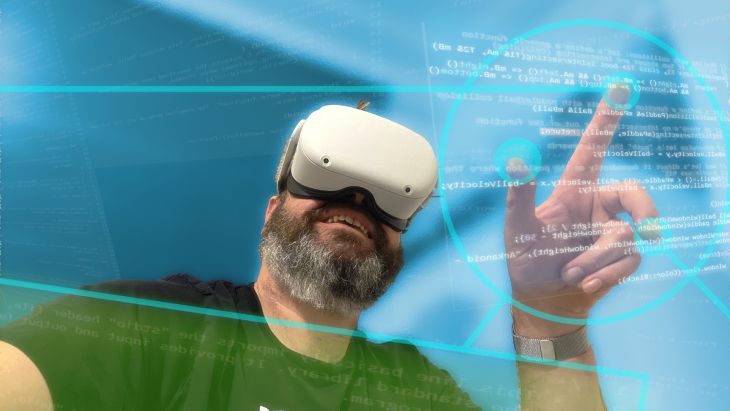How will VR revolutionise software development?

Steve explores the role virtual reality could play in future software development
Sometimes software development can get frustrating. Whether you’re navigating a hierarchy of files (most of which look exactly the same) or following a complex architectural diagram, the world of software development can sometimes feel like a two dimensional mass of clutter and confusion regardless of how cleanly written your code is.
Imagine you could hold that code in your hands, place it somewhere in a 3D space and then run virtual wires to connect everything together. You might keep your database over to the left and see packets of information whizzing off to the right as various functions light up to show they’ve been triggered. Step back a little and you might just see a bug buzzing around the place. No worries, you can get in there and squash it between your fingers.
Is this getting a little far fetched now? Maybe not.
Building your own world
There exists an online game called RecRoom. It’s available on 2D platforms and you can even play it on your mobile phone, but it comes to life in virtual reality. Headsets like those available from Sony and Oculus all have a version available and it’s free to download and play.
While you’re welcome to enjoy this game as an interactive member of RecRoom society, what really makes it great is the “Maker Pen”; a little glue-gun you can grab from your backpack that allows you to create huge interactive worlds which you can publish for the community to explore.
The maker pen gives you a palette of shapes you can build objects and environments with, and also a toolbox of chips that you can ‘wire’ together to make those objects fully interactive. The best thing about this way of building is that you can get inside your creation, see how everything fits together and really work on it in a tangible way. It also makes use of your brain’s spatial awareness, which makes it easy to keep track of where different aspects of functionality occur; certainly much better than scrolling through a list of filenames.
While the tools currently available are basic by professional development standards, developing with them reminds me in principle of the tools I used as an 8-bit developer many moons ago. And don’t be fooled into thinking they’re not capable; many worlds within RecRoom hold up well as enjoyable virtual reality games and experiences.
So where does this fit into professional software development?
Powerful technology
Despite a growing community of hardcore fans, mainstream exposure to virtual reality is still likely to be Google Cardboard or a friends’ headset. The recently released Oculus Quest 2 may begin to turn the tide in this respect, but until then there’s no reason virtual reality shouldn’t make its mark in our industry.
Imagine how much more effective you could be as a team, building a website or native mobile app within a 3D space, where you could interact not only with each other, but the code itself in real-time.
In these days where remote working is becoming the norm, I believe it’s only a matter of time before someone develops the platform that makes this a reality, where you could literally become the ghosts in the machine.
I’m convinced virtual reality will revolutionise software development at some point in the near future and I’d like a part in making that happen. Would you?
Then get ready, Player One.
Looking for something else?
Search over 450 blog posts from our team
Want to hear more?
Subscribe to our monthly digest of blogs to stay in the loop and come with us on our journey to make things better!
